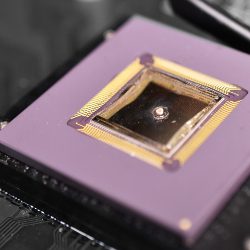
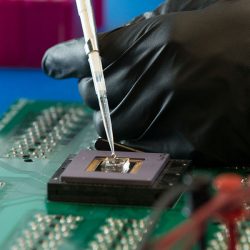
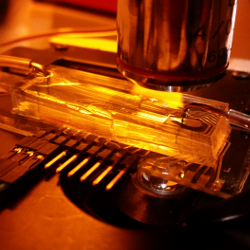
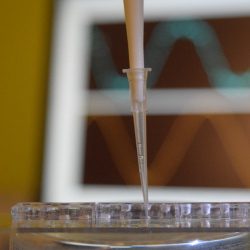
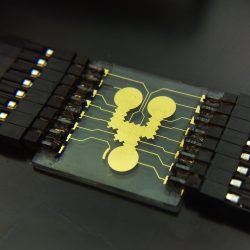
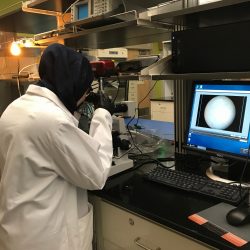






Compact and Low-Cost Diagnostic Platform for POC
Emerging and remerging infectious pathogens, such as Ebola, Middle East Respiratory Syndrome (MERS), West Nile, dengue and Zika viruses 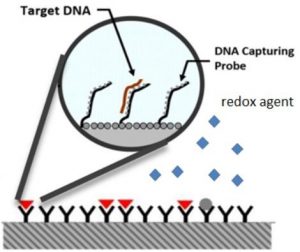 create a strong need for a low-cost, point-of-care (POC) diagnostic platform that would enable rapid and sensitive pathogen detection. Early and accurate detection of viral infectious diseases is of crucial importance in preventing epidemic disease outbreaks. PCR amplification has been a gold standard in viral diagnostics. However, its limitations in terms of cost and complexity are well known. One of the cost-effective alternatives to PCR-based detection of pathogen relies on measurement of electrical property changes due to probe-target binding without labeling. The research at BLISS focuses on two methods: capacitive biosensing, electrochemical impedance spectroscopy (EIS).
create a strong need for a low-cost, point-of-care (POC) diagnostic platform that would enable rapid and sensitive pathogen detection. Early and accurate detection of viral infectious diseases is of crucial importance in preventing epidemic disease outbreaks. PCR amplification has been a gold standard in viral diagnostics. However, its limitations in terms of cost and complexity are well known. One of the cost-effective alternatives to PCR-based detection of pathogen relies on measurement of electrical property changes due to probe-target binding without labeling. The research at BLISS focuses on two methods: capacitive biosensing, electrochemical impedance spectroscopy (EIS).
An affinity-based capacitive sensor using interdigitated electrodes (IDEs) is being developed for unamplified nucleic acid detection with high sensitivity and reproducibility. Using a 24-nucleotide DNA probe and target set designed based on the West Nile virus sequence (Kunjin strain), we have recently demonstrated with high reproducibility that the capacitive biosensor produces an output of more than 70nF in capacitance change in response to as few as 20 complementary DNA targets (0.25 attogram) at a concentration of ~1.5 aM. In addition to the low detection limit, the biosensor showed a good dynamic range of detection from 1 µL–1 to 105 µL–1 target molecules (20 to 2 million total targets), making it suitable for sample analysis in a typical clinical application environment. In parallel with the capacitive biosensor development, EIS is also being pursued for directly detecting pathogens or antibodies in patient blood, saliva, or urine samples. Taking advantage of impedance spectrum, it allows to identify explicit double layer capacitance and electron transfer resistor on each electrode.


A handheld, rechargeable battery-powered electrochemical analyzer is being developed. The device is capable of providing measurements for impedance/capacitive spectroscopy, cyclic voltammetry/Fast scan cyclic voltammetry on changes due to pathogen affinity binding or changes in faradic/non-faradic current. Low cost printed electrodes can be inserted into an adaptor kit and connect to the device through USB cable, which facilitate the data collection process and allow to do easy point-of-care measurement. Integrated into the electrochemical analyzer is Bluetooth capability that enables communication with mobile devices. The handheld device contains a set of basic data analysis algorithms and potentially can communicate directly with a cloud-based data server for big data diagnosis.

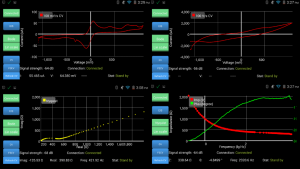
Walter Scott, Jr. College of Engineering
www.engr.colostate.edu
700 Meridian Ave
1301 Campus Delivery
Fort Collins, CO 80523-1301
(970) 491-3366
School of Biomedical Engineering
www.engr.colostate.edu/sbme
700 Meridian Ave
1376 Campus Delivery
Fort Collins, CO 80523-1376
(970) 491-7157
Walter Scott, Jr. College of Engineering
www.engr.colostate.edu
700 Meridian Ave
1301 Campus Delivery
Fort Collins, CO 80523-1301
(970) 491-3366
School of Biomedical Engineering
www.engr.colostate.edu/sbme
700 Meridian Ave
1376 Campus Delivery
Fort Collins, CO 80523-1376
(970) 491-7157



